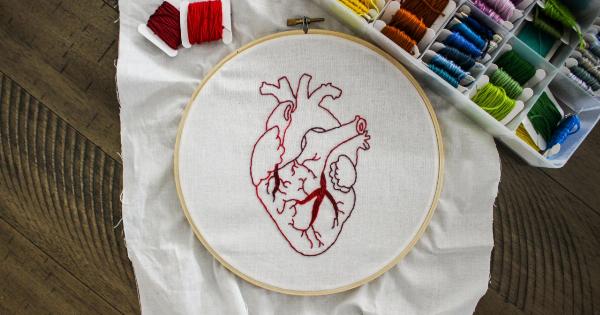Diabetic ulcers are a serious complication that can arise for individuals with diabetes. These ulcers are characterized by open sores or wounds that typically develop on the feet or lower legs.
Due to the potential for complications, it is of utmost importance to take preventive measures to avoid the occurrence of diabetic ulcers. In this article, we will explore why preventing diabetic ulcers is crucial and provide tips on how to minimize the risk of developing them.
Understanding Diabetic Ulcers
Diabetic ulcers are a common and debilitating issue that affects many individuals with diabetes. The presence of high blood sugar levels in individuals with diabetes leads to poor blood circulation and nerve damage, particularly in the extremities.
These conditions increase the risk of injury and inhibit the body’s ability to heal wounds effectively.
Diabetic ulcers often start as small sores or blisters but can quickly progress into more severe wounds. If left untreated or undetected, ulcers can become infected, leading to significant complications.
In extreme cases, amputation may be necessary to prevent the spread of infection and tissue damage.
The Impact of Diabetic Ulcers
The consequences of diabetic ulcers can be life-altering. They significantly impact an individual’s quality of life and can result in long-term disability.
The presence of chronic ulcers can lead to prolonged pain and discomfort, limiting mobility and preventing individuals from engaging in their regular activities.
Moreover, diabetic ulcers pose a considerable economic burden on the healthcare system and society as a whole.
The costs associated with treating and managing diabetic ulcers are substantial, including hospital stays, medications, wound dressings, and potential surgical interventions.
Preventive Strategies
Although the risks associated with diabetic ulcers are severe, they can be mitigated by implementing preventive strategies. Here are ten crucial steps to minimize the likelihood of developing diabetic ulcers:.
1. Control Blood Sugar Levels
Consistently managing blood sugar levels within the target range prescribed by healthcare professionals is paramount. By doing so, individuals can prevent or reduce the risk of complications associated with diabetes, including diabetic ulcers.
2. Inspect Feet Daily
Thoroughly examining the feet on a daily basis is essential. Any cuts, abrasions, blisters, or swelling should be immediately addressed to prevent the development of ulcers.
If needed, a mirror can be used to inspect the soles and other hard-to-see areas of the feet.
3. Practice Proper Foot Hygiene
Keeping the feet clean and dry is crucial in preventing ulcers. Daily washing with mild soap and lukewarm water is recommended.
Afterward, thoroughly drying the feet, especially between the toes, minimizes the risk of fungal infections that can contribute to ulcer formation.
4. Moisturize Regularly
Applying a gentle moisturizer to the feet, except for between the toes, can help prevent dry and cracked skin. Sok-proof hydration helps maintain the skin’s integrity and decreases the likelihood of developing wounds that can progress to ulcers.
5. Trim Toenails with Care
Keeping toenails properly trimmed is essential, but caution should be exercised to avoid cuts or injuries.
Toenails should be trimmed straight across, and sharp edges should be filed down to minimize the risk of ingrown toenails or accidental skin punctures.
6. Choose Proper Footwear
Wearing well-fitting shoes that provide support and protection is vital. Shoes should be comfortable and roomy, with enough space for toes to wiggle freely. Diabetic individuals should avoid open-toed shoes, ill-fitting footwear, and high heels.
7. Inspect Shoes for Debris
Prior to wearing shoes, a thorough inspection should be conducted to ensure there is no debris, pebbles, or other foreign objects that could cause irritation or injury. Even the smallest particles can lead to discomfort or damage to the skin.
8. Avoid Extreme Temperatures
Extreme temperatures can pose risks to individuals with diabetes, especially their feet. It is crucial to avoid exposing feet to excessive heat or cold, as they may impair circulation or cause burns or frostbite.
9. Manage Peripheral Neuropathy
Peripheral neuropathy is a common condition among individuals with diabetes and can contribute to the development of ulcers. Managing this condition through proper medication, regular check-ups, and adhering to lifestyle recommendations is essential.
10. Regular Check-ups with Healthcare Team
Regular visits to healthcare professionals are crucial in preventing diabetic ulcers. These check-ups allow healthcare providers to monitor blood sugar levels, assess nerve function, and inspect the feet for any signs of complications.
Conclusion
Preventing diabetic ulcers is of utmost importance as they can have severe consequences for individuals with diabetes.
By following proper preventive measures, such as maintaining blood sugar control, conducting daily foot inspections, practicing good foot hygiene, and wearing appropriate footwear, the risk of developing diabetic ulcers can be significantly reduced.
Remember, prevention is key in managing diabetic ulcers.
Taking proactive steps to protect your feet and seeking immediate medical assistance for any wounds or abnormalities can help preserve your health, mobility, and overall well-being in the face of diabetes.





























